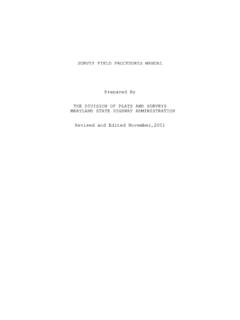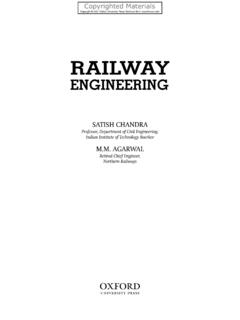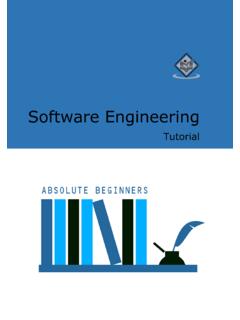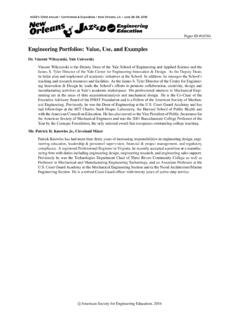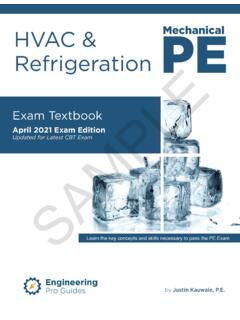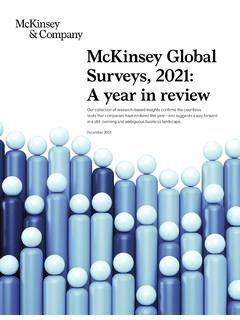Transcription of Geophysical Methods & Applications - Subsurface Surveys
1 2075 Corte Del Nogal, Suite WCarlsbad, California 92011 SSuubbSSuurrffaaccee SSuurrvveeyyss && AAssssoocciiaatteess,, AAnn AApppplliieedd GGeeoopphhyyssiiccaall CCoommppaannyy Office: (760) 476-0492 Fax: (760) 476-0493 Subsurface Surveys & Associates, Inc. GGeeoopphhyyssiiccaall MMeetthhooddss && AApppplliiccaattiioonnss Subsurface Surveys & Associates, Inc., established in 1988, specializes in near-surface geophysics and utility locating services and is dedicated to establishing strong client relationships.
2 Subsurface survey s extensive education and experience in implementing state-of-the-art techniques allows for a more comprehensive approach to solving complex problems through cost-effective means. Subsurface Surveys & Associates, Inc. 2 Subsurface Surveys , an applied geophysics company, uses a variety of Geophysical Methods to solve engineering , geological, environmental and forensic problems. The Methods and instruments we use are chosen to meet the specific needs of our clients and accommodate the existing field conditions.
3 Geophysical Areas Covered Seismic Refraction Seismic Reflection Seismic Downhole and Crosshole Surveys Microearthquakes Gravity Magnetics Ground Penetrating Radar (GPR) DC Resistivity Depth Sounding & Profiling Electromagnetic Induction (EM) Very Low Frequency (VLF) Spontaneous Potential (SP) Tellurics, Dipole-Dipole & other Electrical Methods Ground Motion Monitoring Seismic Resonance Profiling Range of Projects Resource Exploration Water Projects & Well Siting Landfill Imaging Tank & Utility Location & Identification Well Logging Construction Siting Fault and Geologic Hazards Investigations Archeological Field Studies Forensic Investigations Legal Applications Materials Properties & Site Response Spectra Abandoned Well Locating Spill and Plume Mapping Void Detection Planning and Review Downhole Surveys Ground Motion Monitoring Background: Subsurface Surveys & Associates, Inc.
4 , an applied Geophysical firm, was established in December of 2004 through the acquisition of Subsurface Surveys . Subsurface Surveys was founded in 1988, by Dr. Gary Crosby, PhD, GP, and RG, who still continues to provide leadership and guidance to the everyday operations of the company. We are a privately owned small business specializing in Geophysical data acquisition, processing, and interpretation in terms of real world geology. Experience: Dr. Gary Crosby along with Phil Walen, our principal geophysicist and Leopold Mairesse, our senior geophysicist at Subsurface Surveys and Associates, Inc. has a combined 110 years of experience in Geophysical Applications .
5 The company has extensive experience in shallow exploratory geophysics, such as fault and geologic hazards investigations, tank and utility detection, water projects and well sightings, blast and vibration monitoring, archeological investigations, spill and plume mapping, forensic investigations, bedrock rippability, ordnance locations, and landfill mapping. The following pages contain a brief description of most of the Methods and instruments we use. Subsurface Surveys & Associates, Inc. 3EM techniques are particularly useful in: Locating buried metal objects (drums, USTs, utilities, etc.)
6 Delineating contamination plumes Map soil salinity and salt water intrusion Defining lateral changes in lithology Locating cavities (old mine tunnels) Locating water producing fractures Investigating Landfills Detecting UXO Gathering of forensic evidence Photograph of EM-31 Photograph of EM-61 ELECTROMAGNETIC Methods Introduction: Electromagnetic induction (EM), as the name implies, uses the principle of induction to measure the electrical conductivity of the Subsurface . Unlike conventional resistivity techniques, no ground contact is required. This eliminates direct electrical coupling problems and allows much more rapid data acquisition.
7 Because EM instruments provide rapid and easy data collection, they are often employed as the reconnaissance tools, used to identify anomalies for greater detailing. There are two categories for which electromagnetic field, and time domain measures decay time of an electromagnetic pulse induced by a transmitter. Frequency Domain Meters: A sinusoidally varying magnetic field electromagnetically induces currents in the ground in such a manner that their amplitude is linearly proportional to the terrain conductivity. The magnitude of these currents is determined by measuring the magnetic field which they in turn generate.
8 For shallow profiling (up to 20 feet), a Geonics, Inc. EM-31 Terrain Conductivity meter is used. One person can collect as many as 10,000 data points per day with this instrument. An EM-34 is used for depths of investigation between 30 and 180 feet. This instrument requires two people to operate, and up to 500 data points per day can be collected under good conditions. These tools are extremely sensitive and accurate, capable of detecting variations in conductivity of as little as 3%. Data are automatically stored in an electronic data logger for later interpretation when transferred to a computer.
9 Time Domain Meters: Time domain meters consist of a powerful transmitter and receiver. The transmitter generates a primary magnetic field, which induces eddy currents immediately below the transmitter loop. The receiver then measures the decay of the eddy currents during the transmitter s off cycle. The strength of the field is directly proportional to the average conductivity of the Subsurface materials. The system can sound the depth, thickness and conductivity of layers down to 300 m below surface. For Applications such as mapping the thickness of aquifers, clay layers and assessing water quality. Metal Detectors: The EM-61 instrument is a high resolution, time-domain device for detecting buried conductive objects.
10 It consists of a powerful transmitter that generates a pulsed primary magnetic fild when its coils are energized, which induces eddy currents in nearby conductive objects. The decay of the eddy currents, following the input pulse, is measured by the coils, which in turn serve as receiver coils. The decay rate is measured for two coils, mounted concentrically, one above the other. By making the measurements at a relatively long time interval (measured in milliseconds) after termination of the primary pulse, the response is nearly independent of the electrical conductivity of the ground.
